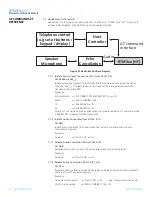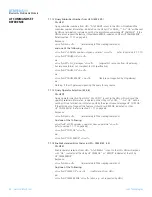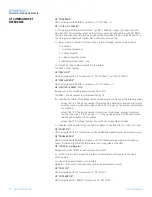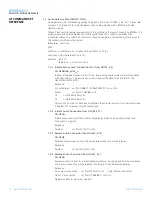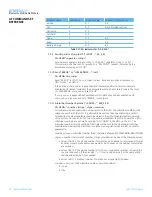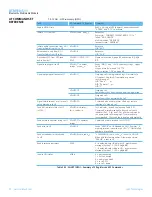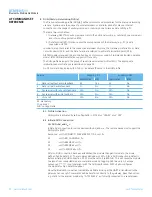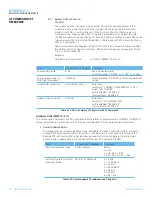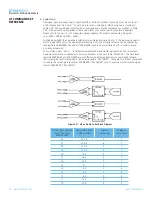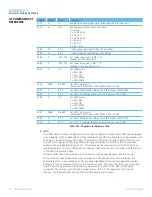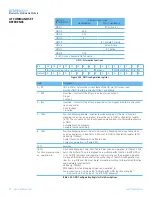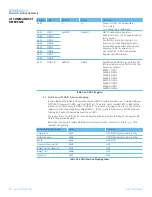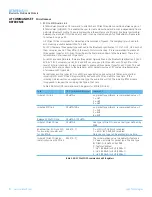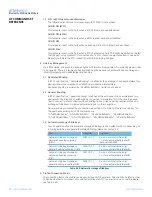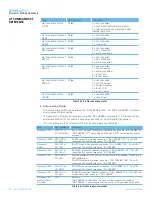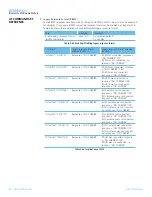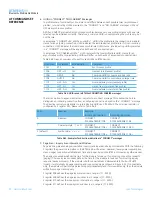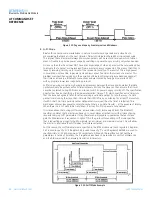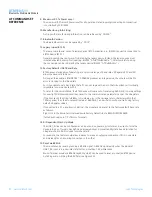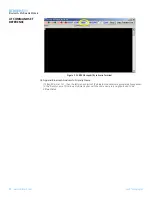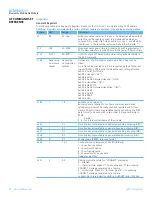
74
www.lairdtech.com
Laird Technologies
BTM510/511
Bluetooth
®
Multimedia Module
8.2.1 Release DUN Connection
AT+DUH
The module must be in command mode so that AT-commands will be parsed. If the
module is in data mode (S531=0, S507=2), toggle DSR line to change into command
mode. <cr><lf>OK <cr><lf> will be sent to the host to confirm that that module is in
command mode. Toggling DSR means to de-assert (deactivate) an and assert (activate)
the DSR line within a time specified by S519 which is 500 ms per default. Hence DSR needs
to be asserted at the time of AT+DUD<BdAdd>, if data mode with S531=0 and S507=2 or
S507=1 is configured.
DSR asserted means a voltage level of logic 0 (0.0 V) at the module pin, because the UART
level shifter inverts the signal. Accordingly, DSR de-asserted means a voltage level of logic
1 (3.3 V) at the module pin.
Response:
On Bluetooth disconnection:
<cr,lf>NO CARRIER 1103<cr,lf>
Task
AT-Command / S Register Comment
Enable DUN profile
S102
0x04 = DUN (bitmask),
needs subsequent “AT&W” and “ATZ” to activate
Set up escape mode via
DSR, high throughput
ATS507=2
Needs subsequent “AT&W” if desired as permanent
setting
Initiate DUN connection
AT+DUD<bd_addr
hex
>
Responses:
successful: “CONNECT 123456789012,1103,>”
failed: “NO CARRIER”
profile disabled: “ERROR 59”
incorrect state: “ERROR 63”
Release DUN connection
AT+DUH
Responses:
successful: “NO CARRIER 1103”
profile disabled: “ERROR 59”
incorrect state: “ERROR 63”
Table 3.33: DUN – Summary of S Registers and AT Commands
Hardware Units (BTM510 / 511)
This section covers S-Registers and AT-Commands that are related to hardware units of a BTM510 or BTM511
device. For this section, please also refer to the bluecore data sheet [10] for more detailed information.
1. Audio Loopback Mode
For testing purposes, an audio loopback mode is available. In mode=1 audio input (ADC) and audio
output (DAC) are connected directly. In mode = 2, the stereo audio input signal is fed through the
Kalimba DSP with running SBC codec (encoder, decoder) and is directed back to the audio stereo
output. Audio Loopback Mode is controlled with the new AT Command “AT+BTL”.
Task
AT-Command / SRegister
Comment
Set audio loopback mode
AT+BTL<Mode>
Mode:
0 = off
1 = on, ADC -> DAC
2 = on, ADC -> DSP -> DAC
Set sampling rate for Audio
Loopback Mode
S419 [0..6], default=6
0 = 8 kHz
1 = 11.025 kHz
2 = 16 kHz
3 = 22.050 kHz
4 = 24 kHz
5 = 32 kHz
6 = 44.1 kHz
Table 3.39: Audio Loopback AT-commands and S-Registers
AT COMMAND SET
REFERENCE


